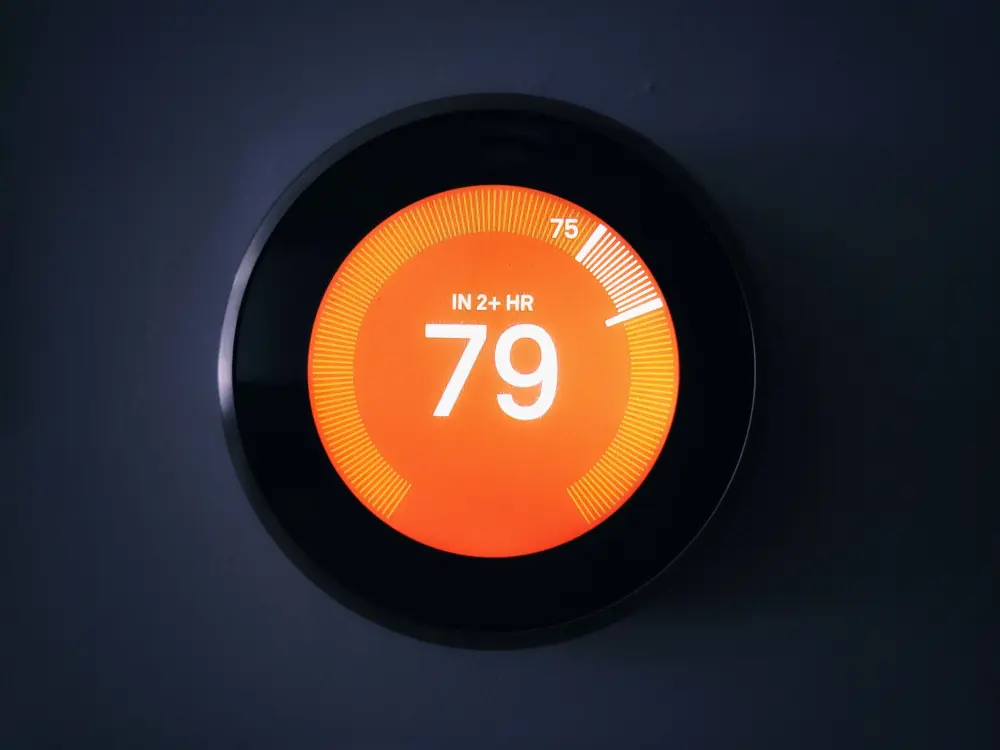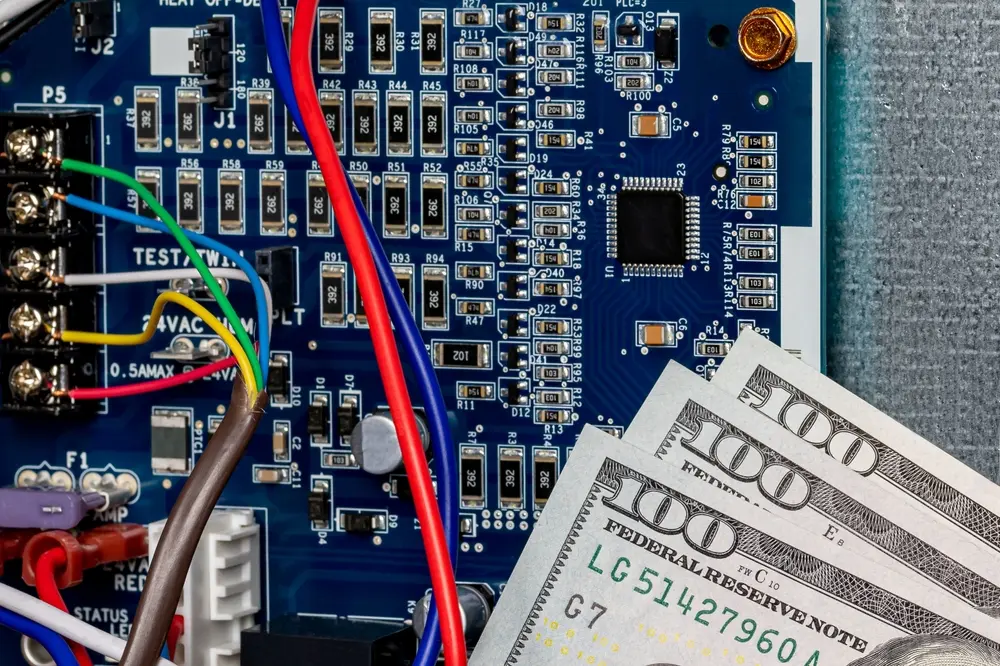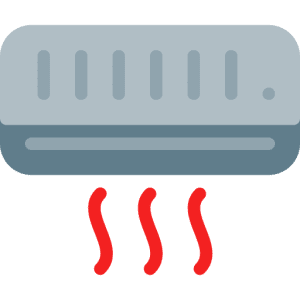Why Is My Thermostat Not Working? Common Issues & Solutions

Whether it’s the middle of summer or the chilly days of winter, your HVAC works hard to keep your home at the perfect temperature. Behind all the mechanisms lies the brain behind the operation: your thermostat. With direct control, you can change your temperature to suit your needs, but what happens when that control is stripped away?
A broken thermostat can cause your HVAC system to run wild, quickly increasing your home’s cost. The experts at LimRic have broken down the common questions of broken thermostat situations and what you can do before calling professional help.
Why is My Thermostat Blank?
With modern advancements, most thermostats have a handy display showing the current temperature, preferred settings, and time. However, a blank thermostat screen is a red flag that something is wrong with the power connection. No power means your thermostat can’t work correctly.
Common Causes
Dead or low thermostat batteries: Even some modern thermostats require a fresh set of batteries (AA or AAA) to function correctly. Without full batteries, the thermostat will be dead.
- Solution: Simply replace the batteries with a fresh set. Your thermostat will normally have an accessible area for the batteries.
Tripped circuit breaker: Your circuit breaker powers both your HVAC and thermostat. If it suddenly trips, it cuts all power to the electronics and systems connected, resulting in a blank screen on the thermostat.
- Solution: Go to your circuit breaker and ensure it needs to be reset.
Faulty wiring: If wiring is insecure or damaged, the electrical power that travels through it cannot reach the thermostat, resulting in a blank screen.
- Solution: Wiring can be dangerous to deal with on your own. Call a professional electrician for assistance to avoid the risks.
Dirty air filter: A part you may not think about is the filter for your HVAC unit. This part traps dust and debris, which stops disruptive clogs. When filters get dirty enough, they can trigger a safety airflow switch, shutting down your system and thermostat.
- Solution: Remove your system filter to see how dirty it is and replace it if needed. A good routine to get into is to replace your filter every 1 to 3 months.
Failed thermostat: Thermostats provide precise temperature control for around 10 years. Past that point, their components begin failing, requiring a full replacement, either by you or an electrician. Other failure states can be brought on due to malfunctions or physical damage.
- Solution: First, attempt to reset the thermostat following the proper steps in your owner’s manual. A persistent blank screen means the reset failed, and you should then upgrade your system to a new model, such as a smart thermostat.
Blown fuse: A blank thermostat could result from a recent blown fuse. To better determine your voltage fluctuations, use a multimeter, which analyzes them.
- Solution: Attach the multimeter to the fuse box around your HVAC. Go one by one with each fuse, checking for remaining voltage. If you find one that lacks voltage, it’s best to replace it to avoid future blown fuses.

Why is My Thermostat Not Reaching the Set Temperature?
One of the most frustrating problems with your thermostat is that it can’t reach the temperatures you want. This results in your home feeling too warm or too cold. There are quite a few reasons why your thermostat is rebelling.
Common Causes
Dirty sensors: Leaving your thermostat to get dusty and dirty may seem like a small issue. However, dust and dirt can block the unit’s sensors from calculating temperature.
- Solution: Clean your thermostat thoroughly. Use a soft cloth to gently wipe away debris and an electrical contact cleaner to remove any corrosion.
Thermostat needs to be recalibrated: Thermostats require yearly calibrations to correctly read and respond to temperatures.
- Solution: An easy way to calibrate is to take a thermometer at home and place it right by your thermostat. Track the temperature on the thermometer for around 15 minutes and then compare it to the readings on the thermostat. If a considerable temperature difference occurs, it’s best left to a professional inspection.
Clogged filters: When air filters are clogged, air cannot properly circulate through your HVAC system, resulting in heating or cooling that cannot reach the set temperature properly.
- Solution: Locate your air filter and look for debris. In some cases, dust and debris are not present, but if you hold the filter up, light can’t travel through. In those cases, you’ll need to replace the filter fully.
Poor thermostat location: A thermostat can’t be installed just anywhere. Its placement in rooms where the temperature differs from the rest of the property can severely affect its performance. Avoid fireplaces, breezy windows, or even the kitchen.
- Solution: The best solution is to move your thermostat to a better location. Doing this alone can be harder without the expertise, so leave it to the professionals from LimRic.
Thermostat isn’t level: Even the slightest position of being a slight non-flush with the wall can cause reading problems with your thermostat.
- Solution: Check where your thermostat is to see if it hangs off the wall or is loose. If so, level it out with the wall, usually just by pinning it back on the wall, and the readings should start coming back much more accurate.

Why Is My Thermostat Clicking But Not Turning On?
Your thermostat’s unique clicking sound indicates when your HVAC system turns on or off. But hearing a click and then feeling nothing from your heating and cooling signals that something is going wrong with your thermostat.
Common Causes
Faulty thermostat: Repeated clicks with no response from your HVAC is your red flag that your thermostat is malfunctioning, trying to send the signal to your HVAC to run.
- Solution: When it comes to internal malfunctions, it’s best to have an HVAC professional inspect your system thoroughly, as components like wiring may need to be replaced.
Malfunctioning control board: This board receives the signal from the thermostat, which tells your HVAC system to turn on and off. With continual use, these boards wear down, resulting in more malfunctions, which prevent the overall system from turning on.
- Solution: When dealing with faulty components like these, it’s best left in the hands of professionals. They have the tools and expertise to address electrical issues like bad wiring or even replace the command board.
Broken AC contactor: When worn down or malfunctioning, that signal never goes through, keeping your system shut off. In this circumstance, your thermostat will only click once, but there won’t be any other sounds from the system.
- Solution: You can check the status of your contactor by listening to your outdoor unit during the start-up. If all you hear is a singular click and nothing else, your contactor needs to be professionally replaced.
Worn-out start capacitor: Your capacitors act as a pseudo-battery to kickstart your HVAC system within your condenser system. As they are continually used, capacitors can wear down and lose the charge needed to start your system.
- Solution: You can check this issue by listening closely to your system. Listen for repeated clicks along with a noticeable humming noise. This indicates the motors are trying to start without the needed charge. After this, an HVAC professional can assist with replacing the capacitors and kickstarting your system again.

Why is My Thermostat Blinking Cool On, But No Air?
If your thermostat blinks “cool on” but there’s no air, it may mean your home has reached the set temperature, causing the compressor to turn off. If the message persists when you need cooling, it could indicate a problem with the thermostat.
Common Causes
Dead or low batteries: This is the most straightforward reason for the continuous message; it’s the system’s message for you to change out the batteries with a fresh set
- Solution: Grab a fresh set of AA or AAA batteries that can replace the thermostat’s old ones.
Problem with outdoor unit: The other culprit behind the persistent blink is your outdoor unit malfunctioning. Your thermostat may indicate an issue using a flashing light, which indicates a problem outside, resulting in the system shutting down.
- Solution: First, shut off your indoor unit for about a minute, then turn it back on after 30 seconds, which will turn the light off. Wait around 10 minutes to see if your outdoor unit starts up normally. If it does, your culprit is the circuit breaker having issues. If the unit still won’t turn on, there is a much more severe problem that an HVAC expert must check.
Trust LimRic for Reliable Thermostat Repair & Replacement Services
If you’ve followed our troubleshooting steps and your thermostat is still uncooperative, relax and let the professionals at LimRic handle it.
Our experts offer comprehensive inspections and repairs for all aspects of your HVAC system, including those pesky thermostats. We conduct a detailed analysis to quickly identify the problem areas and provide the necessary solutions, ensuring your thermostat functions properly again.
If repairs are insufficient, we also offer a variety of upgrades, including modern smart thermostats that give you greater control over your temperature settings. Don’t let a malfunctioning thermostat dictate your comfort; regain control by contacting LimRic for our repair and replacement services.












